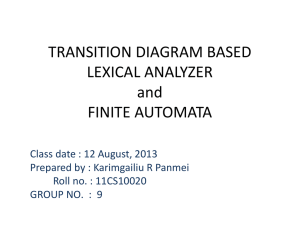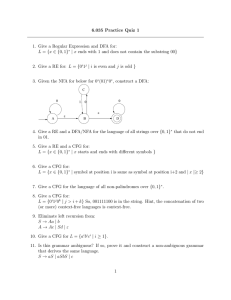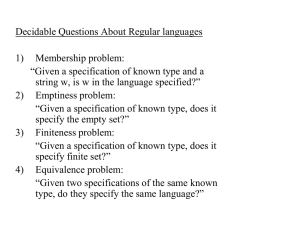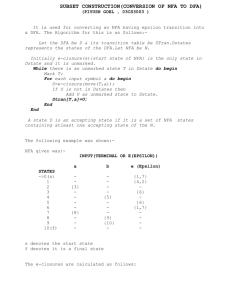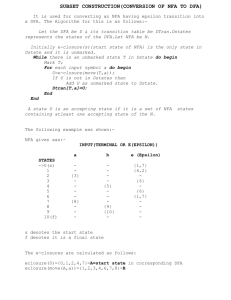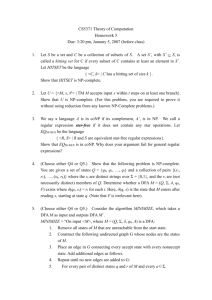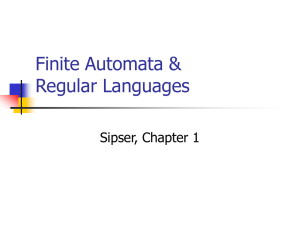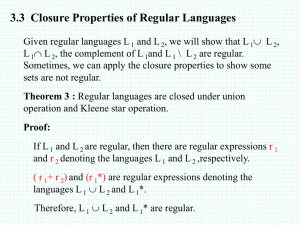MAD 3512 - THEORY OF ALGORITHMS
advertisement
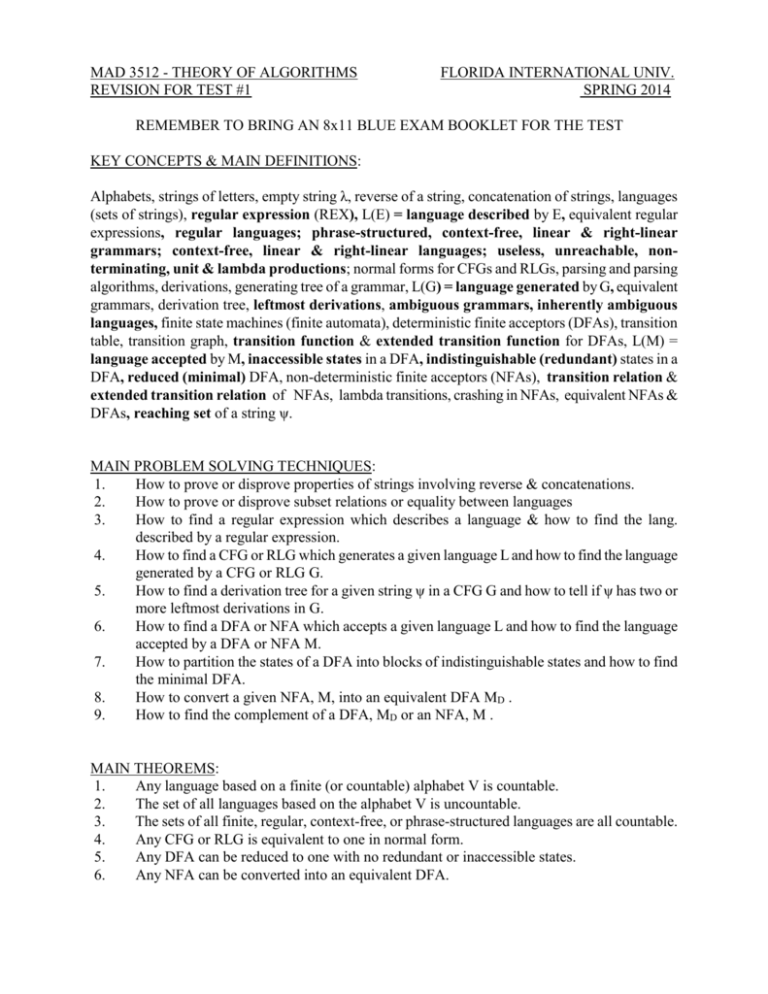
MAD 3512 - THEORY OF ALGORITHMS REVISION FOR TEST #1 FLORIDA INTERNATIONAL UNIV. SPRING 2014 REMEMBER TO BRING AN 8x11 BLUE EXAM BOOKLET FOR THE TEST KEY CONCEPTS & MAIN DEFINITIONS: Alphabets, strings of letters, empty string λ, reverse of a string, concatenation of strings, languages (sets of strings), regular expression (REX), L(E) = language described by E, equivalent regular expressions, regular languages; phrase-structured, context-free, linear & right-linear grammars; context-free, linear & right-linear languages; useless, unreachable, nonterminating, unit & lambda productions; normal forms for CFGs and RLGs, parsing and parsing algorithms, derivations, generating tree of a grammar, L(G) = language generated by G, equivalent grammars, derivation tree, leftmost derivations, ambiguous grammars, inherently ambiguous languages, finite state machines (finite automata), deterministic finite acceptors (DFAs), transition table, transition graph, transition function & extended transition function for DFAs, L(M) = language accepted by M, inaccessible states in a DFA, indistinguishable (redundant) states in a DFA, reduced (minimal) DFA, non-deterministic finite acceptors (NFAs), transition relation & extended transition relation of NFAs, lambda transitions, crashing in NFAs, equivalent NFAs & DFAs, reaching set of a string ψ. MAIN PROBLEM SOLVING TECHNIQUES: 1. How to prove or disprove properties of strings involving reverse & concatenations. 2. How to prove or disprove subset relations or equality between languages 3. How to find a regular expression which describes a language & how to find the lang. described by a regular expression. 4. How to find a CFG or RLG which generates a given language L and how to find the language generated by a CFG or RLG G. 5. How to find a derivation tree for a given string ψ in a CFG G and how to tell if ψ has two or more leftmost derivations in G. 6. How to find a DFA or NFA which accepts a given language L and how to find the language accepted by a DFA or NFA M. 7. How to partition the states of a DFA into blocks of indistinguishable states and how to find the minimal DFA. 8. How to convert a given NFA, M, into an equivalent DFA MD . 9. How to find the complement of a DFA, MD or an NFA, M . MAIN THEOREMS: 1. Any language based on a finite (or countable) alphabet V is countable. 2. The set of all languages based on the alphabet V is uncountable. 3. The sets of all finite, regular, context-free, or phrase-structured languages are all countable. 4. Any CFG or RLG is equivalent to one in normal form. 5. Any DFA can be reduced to one with no redundant or inaccessible states. 6. Any NFA can be converted into an equivalent DFA.



